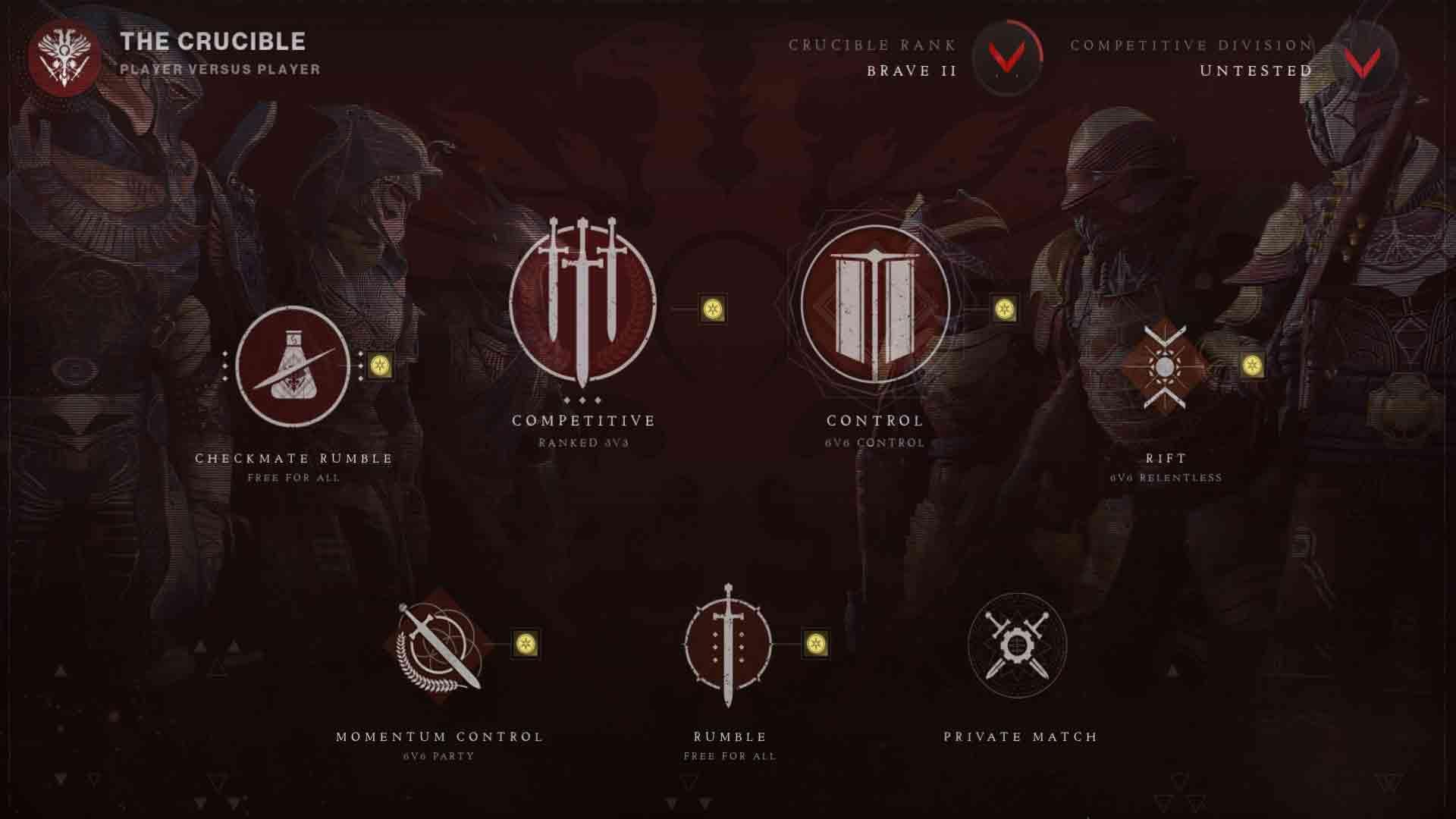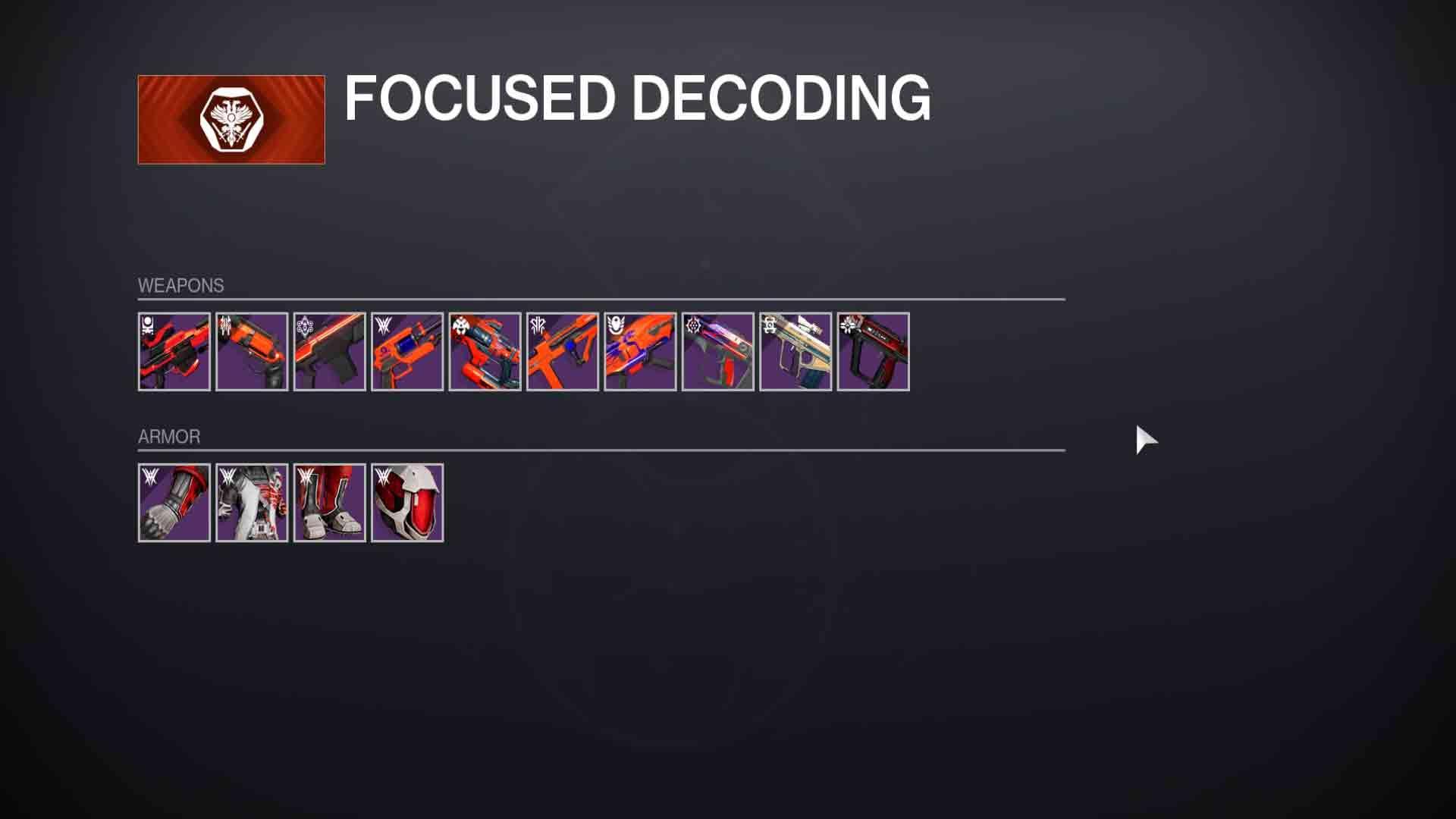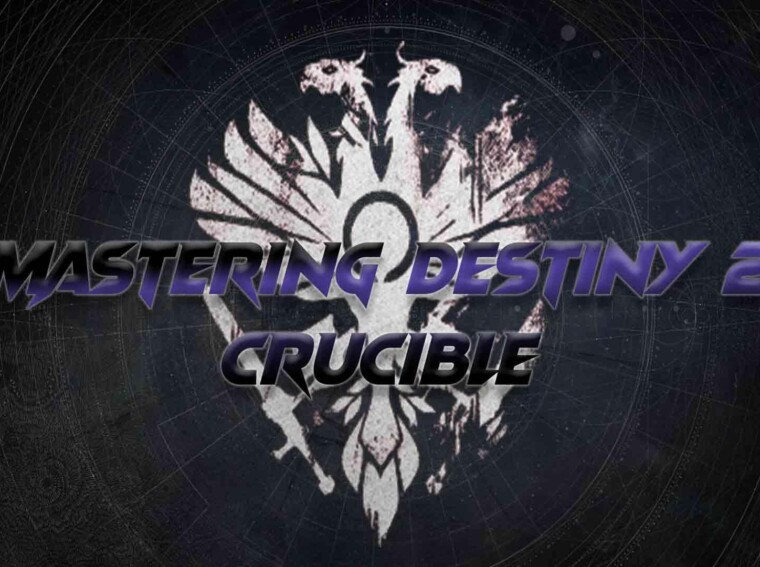Guardians train their bodies and minds in anticipation of future threats by engaging in live-fire combat against each other. While each Guardian might have their own personal reasons for participating, this arena is where the heroes of tomorrow are born.
Welcome to the Crucible.
With over 26 million players in the Crucible and tens of thousands playing at a given time, you have your work cut out for you. Fret not, as this comprehensive guide will explain what players need to know to dominate the multiplayer leaderboards.
What is Crucible in Destiny 2?
The Crucible is the player-versus-player (PvP) game mode of Destiny 2. Guardians go up against each other with their Light and Power attributes disabled. This creates a level playing field where even newcomers can get a chance to defeat veteran players.
-
Lord Shaxx – The Crucible Handler
Players can use any weapons, armor, and exotics gained in the open world, but some are only good in the Crucible due to their perks.
Crucible-exclusive armor and shaders can be purchased from Lord Shaxx, who oversees the matches. Alternatively, these items are also available via Destiny 2 boost packs, along with the benefit of someone skilled in doing the arduous grinding for you.
-
PvP Modes
There are 13 PvP modes or playlists, seven permanent and six weekly. Permanent playlists can be played at any time and consist of the following:
- Control: take and hold capture zones to outscore the opposing team
- Survival: make the other team expend their limited respawn chances
- Clash: classic team deathmatch game mode
- Rumble: classic free-for-all game mode
- Elimination: Clash-style playlist, race to five rounds
- Showdown: revivals by one team deduct points from the other
-
Crucible Labs: community testbed for experimental PvP features and playlists

Weekly playlists can also be played at any time but provide bonuses to players who complete the weekly challenges while playing a match. These include the following:
- Mayhem: Supers charge faster, and Power ammo appears more often
- Rift: capture the flag-style mode, deliver a spark to the enemy rift
- Supremacy: pick up crests from fallen players to confirm kills
- Team Scorched: Clash-style match, but everyone uses a Scorch Cannon
- Momentum Control: kills are the only way to regenerate health and energy
- Relic: score by defeating players with relics
Besides these playlists, there’s the Iron Banner (which runs every month) and Trials of Osiris (open on weekends). The game mode for the Iron Banner can vary among the current modes, while the Trials of Osiris is a modified Elimination-style match.
-
Crucible-Exclusive Weapons and God Rolls
Weapons and armor in the Crucible can be obtained from loot after a playlist match or after gaining a Valor rank. Crucible-exclusive weapons can’t be crafted. Some of these include:
- Blowout: rocket launcher, arc
- Crisis Inverted: hand cannon, arc
- Frozen Orbit: sniper rifle, void
- Randy’s Throwing Knife: scout rifle, kinetic
- Riptide: fusion rifle, stasis
- Sorrow’s Verse: auto rifle, arc
- Survivor’s Epitaph: Hand Cannon
- Out of Bounds: submachine gun, arc
- Autumn Wind: pulse rifle
- Unending Tempest: submachine gun, stasis
Each weapon comes with a random set of perks, so getting the best boils down to luck. God Rolls make Destiny 2 as grinding-intensive as its predecessor, if not more. Most God Roll weapons can be attained in raids and other seasonal events.
-
Crucible-Exclusive Armor
The Clutch Extol set is the featured armor set obtainable in The Crucible. Players can gain an armor item by participating in matches or raising their ranks. The set is available to all three character classes: Hunter, Titan, and Warlock.
After patch 7.0.0.1, players can spend resources to focus on armor sets featured in previous seasons of Destiny 2. Recent ones include Swordfight 4.1 and Phoenix Strife Type 0.
Legacy focus for armor pieces not acquired previously will cost three Crucible Engrams, 50 Legendary Shards, and 10,000 Glimmer. Otherwise, it’ll cost one Crucible Engram and half as many Legendary Shards and Glimmer.
Understanding the Crucible Meta
Any PvP arena will inevitably prompt a discussion of the meta, and Destiny 2 isn’t any different. The Crucible has grown competitive enough to warrant online data tracking to learn more about what weapon lands the most kills, among other things. Regardless, understanding the meta is key to conquering the Crucible.
-
How to Use Popular Weapons
According to the tracking website Destiny 2 DB (also called Destiny Tracker), four out of the top five most-used weapons are Legendary tier, just below Exotic. It goes without saying that rarity isn’t always an indication of performance.
The top-ranked weapon for competitive and quickplay PvP is the Ammit AR2 solar-element auto rifle. While it may be because of a game-breaking bug that Bungie has yet to patch as of this writing, its ease of crafting and precision frame are also reasons for its popularity. Focus on improving its accuracy with perks like Dynamic Sway and Gutshot Straight.
Igneous Hammer (Adept) is another popular choice, especially for game modes that reward headshot kills. As hand cannons have small magazines, optimizing this solar-element hand cannon’s reload rate works well. The Rapid Hit perk provides a bonus reload rate and stability, allowing players to land critical hits in quick succession.
-
PvP Armor and Recommended Stats
The best armor and stats depend on your class.
The Hunter is the most numerous among the three classes (according to one sample study). Their agile playstyle penalizes survivability, so players compensate by enhancing their mobility or healing. Stomp-EE5 (or Stompees) remains the most equipped armor piece, as it enhances class-specific abilities.
The Titan should be built to take hits, which can be a boon in team matches and free-for-all battles to some extent. Oddly, the most popular armor piece for its class, Dunemarchers, is optimized for speed and agility. Perhaps the best way of taking hits is taking fewer hits.
The Warlock is focused on crowd control and buffing, and a single Warlock in a team can be a huge help in any match. As for the most widely used armor piece, Ophidian Aspect seems to enjoy a vast lead compared to others. Its exclusive perk, Cobra Totemic, provides massive buffs to handling and reload rate and extends melee range.
Map Knowledge and Awareness
Crucible matches take place in 25 maps. Remembering strategic points in all these maps won’t be easy, but it’s a match-winning strategy.
-
Sightlines, Positioning, and Strategies
Fortunately, according to a Reddit thread by Mercules904 (who also works at Bungie), most of the Crucible’s maps fall into one of two layouts: circular and three-lane. Knowing the map layout makes strategizing easier.
-
Circular
Circular maps feature concentric circles with spokes stretching from a defined center akin to a bicycle wheel. The center hub is where all the chaos in a match occurs, with the outer areas often limited to skirmishes to push into the center. Sightlines are more restricted the closer to the center players get, which is ideal for setting up ambushes.
-
Three-lane
Three-lane maps are what you expect: an area with multiple Across Lanes, fairly similar to the maps in multiplayer online battle arena (MOBA) games like League of Legends. The intersections between lanes are where most of the fighting happens, and—in typical MOBA fashion—teams will try to push their way along each other’s lanes.
Some maps have hybrid layouts, as in the case of Widow’s Court, which Mercules904 described as a ‘figure-eight.’ Others are variations of three-lane maps featuring a second middle lane, such as Exodus Blue.
-
Anticipate Opponent Movements
Once you have a rough idea of the layout, the next step is to identify points of interest in the map. These include focal points or notable landmarks in each area, ranging from buildings to ammo pickup points.
But the most important ones are entrances and choke points. In some maps, choke points are the only way for one team to turn things around in their favor, so the other should do its best to prevent that by picking them off there.
The amount of cover a map provides will influence your choice of weaponry. Sightlines in cover-heavy maps will be restricted, a favorable environment for close-range weapons like shotguns. Meanwhile, maps with vertical dimensions like water towers are breeding grounds for snipers and top-attack tactics.
Refine Your Weapon Loadouts
With hundreds of weapons in the game, sticking to a single boomstick is a good way to lose in PvP. Mixing and matching your weapon loadout is encouraged.
-
Learn How to Utilize Your Weapons
Primary weapons have infinite ammo but deal the least damage compared to the other two. You’ll use your primary a lot in PvP matches, even in maps with increased Power ammo respawn rates. In Destiny 2, you can equip kinetic or energy-based primary weapons, the latter for stripping an enemy of their shield.
Special weapons complement your class (e.g., sniper rifles work well with Hunters) or the type of match you’re in (e.g., shotguns excel in close quarters). They aren’t exclusive to a certain class, so seeing a Hunter using a shotgun isn’t unusual. Players keep a vast array of special weapons to help them adapt to various situations.

Heavy weapons hit the hardest but have limited ammo and scarce replenishment in PvP (save for Mayhem). This makes their use more situational compared to the other weapon types. A good use for them would be taking out groups of enemies.
-
Experiment with a Bigger Variety of Archetypes
Archetypes refer to a grouping of weapons based on several characteristics, though most PvP players emphasize the rate of fire and damage output. Below are some examples:
- Rapid Fire: essentially spray and pray
- Lightweight: good for firing while moving
- Adaptive: all-rounder weapon
- Precision: excels at surgical killing
- Aggressive: hits the hardest
There’s no one archetype to rule them all, as archetypes vary as much as playstyles. Consider playing with various archetypes to know when and where they shine. Sometimes, you need to fire a hail of bullets against an extremely agile opponent or strike them from out of nowhere.
Familiarize Yourself With the Gunplay
Gunplay in the Crucible (and in the game, in general) is all about firing and maneuvering. PvP maps are designed to encourage players to always stay on the move; even snipers won’t stay in one place forever. If you must stay still to fire more accurately, find a suitable cover first.
Headshots are the most effective takedown in The Crucible. Even with less powerful weapons, it only takes a few bullets to someone’s head to score a kill. Some weapon archetypes, skills, and perks can help, but constant practice makes perfect.
Communication and Teamwork
The Crucible may have an ‘I,’ but there’s no ‘I’ in ‘team.’ Except for Clash and its variants, most playlists involve two teams of three or six players. In fact, teamwork shouldn’t be anything new to Destiny 2 players, as raids and co-op events require them to work together to defeat the boss.
-
Learn from Your Mistakes
Losing matches is unavoidable, especially if you’re just starting in the Crucible. Mistakes are bound to happen in the heat of the match, and the only way to deal with them is to learn from them. Don’t be afraid to try new ways of playing and take a break if you’re tired.
-
Seek Improvements
With an extensive community propping up the game, there’s no shortage of content creators sharing their insights about improving weapon load-outs, perk drop rates, etc. Everything you want to know about Destiny 2 PvP is a quick search engine away.
Conclusion
Mastering the Crucible can be painstaking initially, but the rewards you reap are satisfying. It involves plenty of theory-crafting down to the tiniest detail, which is now easier thanks to an active player base. Test your first-person shooting mettle in this PvP arena and see if you have what it takes to become Earth’s next Guardian.

